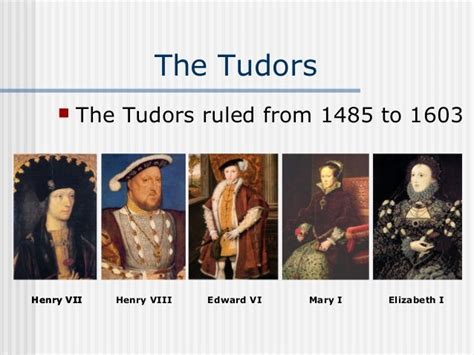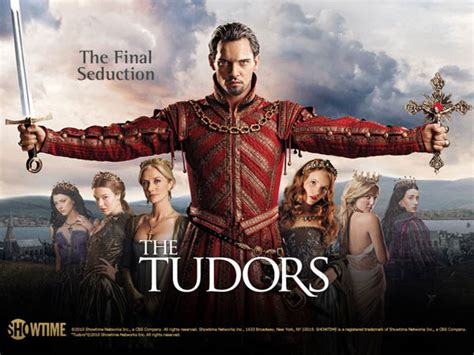when did the tudor period start | when did the tudors rule when did the tudor period start The Tudor period came into being on the back of the victory of Henry VII. Despite a tenuous claim to the throne, Richard III’s Yorkist army was defeated on 22 August 1485 at the Battle of Bosworth Field. Get the best deals on Louis Vuitton Men's Belts when you shop the largest online selection at eBay.com. Free shipping on many items | Browse your favorite brands | affordable prices.
0 · year 7 the tudors
1 · when did the tudors rule
2 · when did the tudors end
3 · the tudors history facts
4 · how many tudors were there
5 · house of tudor timeline
6 · facts about the tudor times
7 · bbc bitesize history tudors
CKSC LV Reactor, Find Details and Price about Dry Type Transformer Distribution Transformer from CKSC LV Reactor - HAIBIAN POWER EQUIPMENT CO., LTD.
The Tudor dynasty was marked by Henry VIII’s break with the papacy in Rome (1534) and the beginning of the English Reformation, which, after turns and trials, culminated .The House of Tudor was an English and Welsh dynasty that held the throne of England from 1485 to 1603. They descended from the Tudors of Penmynydd, a Welsh noble family, and Catherine of Valois. The Tudor monarchs ruled the Kingdom of England and the Lordship of Ireland (later the Kingdom of Ireland) for 118 years with five monarchs: Henry VII, Henry VIII, Edward VI, Mary I and Elizabeth I
Tudor England began when Henry VII became king in 1485 following the Battle of Bosworth and the death of Richard III. There were five Tudor monarchs, not counting Lady Jane Grey who .

The Tudor period saw the gradual evolution of England’s medieval army into a larger, firearm-wielding force supported by powerful ships and formidable gun forts. The Tudor period came into being on the back of the victory of Henry VII. Despite a tenuous claim to the throne, Richard III’s Yorkist army was defeated on 22 August 1485 at the Battle of Bosworth Field.
The Tudors, image and reality, a history of Tudor England. Richard Rex. 10 min read. The Tudors remain among the most instantly recognisable of England’s monarchs. There is no mistaking Henry VIII in the great Holbein portrait of . Origins of the Tudor Dynasty. The Tudor dynasty began with Henry Tudor, later known as Henry VII. His ascent to the throne followed the tumultuous Wars of the Roses, .
year 7 the tudors
The House of Tudor ruled England from 1485 to 1603 CE. The period is seen as a Golden Age of English history when strong-willed monarchs made lasting contributions to the .

The years of Tudor rule saw unprecedented upheaval. Discover the huge changes that took place between the crowning of Henry VII and death of Elizabeth I. The Tudor age began on a remote field in Leicestershire. The battle of Bosworth pitted the forces of the Yorkist king Richard III against those of his Lancastrian challenger, Henry Tudor. Richard’s reign had begun only two years before upon the death of his brother, Edward IV, who appointed him lord protector during the minority of his 12-year-old son and heir, Edward V.
The family name “Tudor” derives from the Welsh name “Tudur.” The dynasty’s founder, Henry Tudor (Henry VII), was born on January 28, 1457, to Edmund Tudor and Margaret Beaufort. Edmund Tudor (c. 1430 – 1456) was .
The Elizabethan era is the epoch in the Tudor period of the history of England during the reign of Queen Elizabeth I (1558–1603). Historians often depict it as the golden age in English history. The Roman symbol of Britannia (a female personification of Great Britain) was revived in 1572, and often thereafter, to mark the Elizabethan age as a renaissance that inspired national pride .
when did the tudors rule
Thus began the start of the Tudor dynasty. However, the Tudor era would be coloured by rebellions, conspiracies, challenges to the succession and fear of further civil war. Henry VIII, Catherine of Aragon and Anne Boleyn. Elizabeth’s half-sister Mary, was born in 1516 to Henry's first wife, Catherine of Aragon.
With the defeat of Richard III at Bosworth Field in 1485, Henry VII ended the Wars of the Roses and founded the Tudor dynasty. Henry VIII’s later defiance of Rome and dissolution of Catholic monasteries helped to increase the power of the throne. The Tudor period ended at the death of Elizabeth I who died in 1603 after 45 years on the throne.The Tudor historical period usually refers to the period 1485 – 1558, especially in relation to the History of England. This coincides with the rule of the Tudor dynasty in England , with the exception of Elizabeth I. Occasionally the term is used more broadly to capture Elizabeth's reign as well, though in general 1558 – 1603 is treated .
Henry was the second son of Henry VII, first of the Tudor line, and Elizabeth, daughter of Edward IV, first king of the short-lived line of York.When his elder brother, Arthur, died in 1502, Henry became the heir to the throne; of all the Tudor monarchs, he alone spent his childhood in calm expectation of the crown, which helped give an assurance of majesty and . In what year did Tudor times start? The House of Tudor was a prominent European royal house that ruled the Kingdom of England and its realms from 1485 until 1603. Hope this helps. . What year did the Tudor period end? With the death of Queen Elizabeth I in 1603. The next monarch was James Stuart, crowned as King James VI of Scotland and King .
In England and Wales, the Tudor period occurred between 1485 and 1603, including the Elizabethan era during the reign of Elizabeth I (1558–1603). The Tudor period coincides with the dynasty of the House of Tudor in England, which began with the reign of Henry VII.Under the Tudor dynasty, art, architecture, trade, exploration, and commerce flourished. [1]The Tudors remain among the most instantly recognisable of England’s monarchs. There is no mistaking Henry VIII in the great Holbein portrait of which so many copies survive. The pose, careful and artful though it is, certainly does not belie the reality of a powerful man, physically and mentally confident beyond the threshold of arrogance.
Causes of the break from Rome and the start of the Church of England. In 1534, . Throughout the rest of the Tudor period, Tudor monarchs tried to take greater control of Ireland. The wider world The Tudors ruled Britain during a fascinating and fast-changing century. Europe emerged from the Middle Ages, and Europeans sailed across the oceans, reaching the East, discovering the New World of America, establishing colonies, and circumnavigating the world for the first time (Ferdinand Magellan in 1517, and Francis Drake in . This act was succeeded and amended throughout the Tudor period by Queen Mary and Queen Elizabeth. . Both Men and Women would start each day with a layer of fresh linen. A simple dress like garment called a chemise (or shift) for a Lady and a long shirt for a man, with the finest softest linen being used for the rich. These basic items could .The sixteenth century has often been seen as a period of immense significance for the evolution of Parliament. The Reformation Parliament of 1529-36, which existed longer than any previous Parliament, enacted a serious of statutes which transformed the relationship between the English Crown, the English people and the Church, as well as formally incorporating the principality of .
when did the tudors end
In England and Wales, the Tudor period occurred between 1485 and 1603, including the Elizabethan era during the reign of Elizabeth I (1558–1603). The Tudor period coincides with the dynasty of the House of Tudor in England, which began with the reign of Henry VII. The Tudor dynasty was marked by Henry VIII’s break with the papacy in Rome (1534) and the beginning of the English Reformation, which, after turns and trials, culminated in the establishment of the Anglican church under Elizabeth I. The period witnessed the high point of the English Renaissance.

The Tudor family rose to power and started the Tudor period in the wake of the Wars of the Roses (1455–1487), which left the main House of Lancaster (with which the Tudors were aligned) extinct in the male line.Tudor England began when Henry VII became king in 1485 following the Battle of Bosworth and the death of Richard III. There were five Tudor monarchs, not counting Lady Jane Grey who ruled for just nine days.The Tudor period saw the gradual evolution of England’s medieval army into a larger, firearm-wielding force supported by powerful ships and formidable gun forts. The Tudor period came into being on the back of the victory of Henry VII. Despite a tenuous claim to the throne, Richard III’s Yorkist army was defeated on 22 August 1485 at the Battle of Bosworth Field.
The Tudors, image and reality, a history of Tudor England. Richard Rex. 10 min read. The Tudors remain among the most instantly recognisable of England’s monarchs. There is no mistaking Henry VIII in the great Holbein portrait of which so many copies survive. Origins of the Tudor Dynasty. The Tudor dynasty began with Henry Tudor, later known as Henry VII. His ascent to the throne followed the tumultuous Wars of the Roses, culminating in the decisive Battle of Bosworth Field in 1485. The House of Tudor ruled England from 1485 to 1603 CE. The period is seen as a Golden Age of English history when strong-willed monarchs made lasting contributions to the nation's history, strutted around in flamboyant clothes and gave endless material for historians and fiction writers ever-after. The period had its darker side with the .
louis vuitton rolling bag replica
mens replica designer laptop bags 15
Get the best deals on Authentic Louis Vuitton Belt In Men's Belts when you shop the largest online selection at eBay.com. Free shipping on many items | Browse your favorite brands | affordable prices.
when did the tudor period start|when did the tudors rule




























